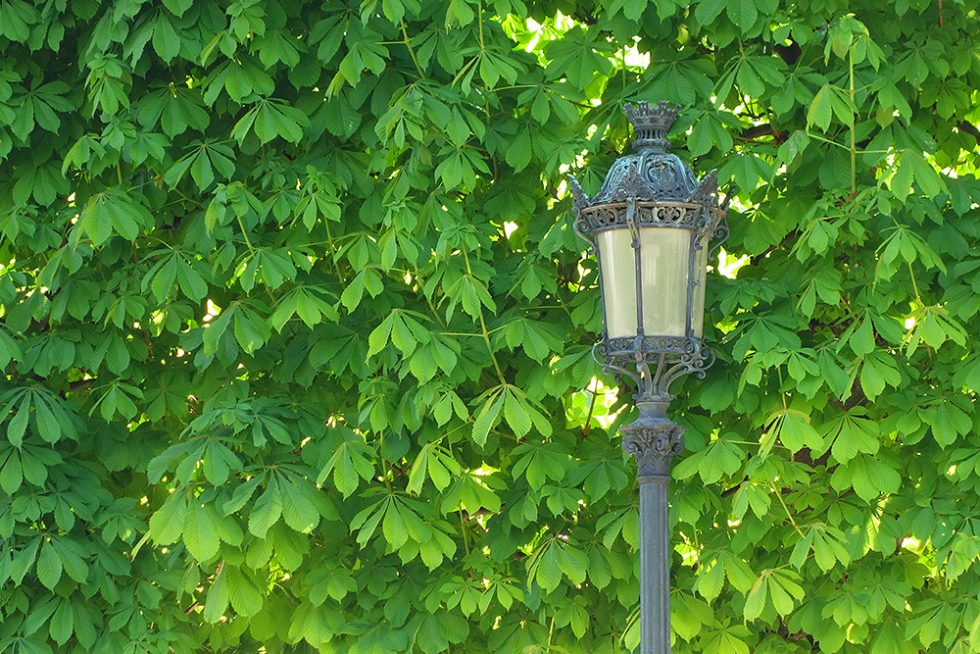-

One of the things I enjoy about doing 366 is finding the stories that might lie behind an otherwise fairly ordinary or not especially remarkable picture. Today’s picture of a lamppost against a background of leaves is fairly unremarkable on the face of it, however, after a little post picture research, there is quite a good tale to tell about the lampposts of Paris.
Few would argue that Paris is a beautiful city, but behind the manicured gardens, decorated walls, and elaborate doorways there are often grim tales from the cities bloody and barbaric history. Take the simple Lanterne for example. Back in the late 1700’s lampposts were used by revolutionists to hang officials and aristocrats. So common was the practice it led to the lamppost becoming a symbol of street justice in revolutionary France, and to the expression “À la lanterns” which is similar to the English expressions “string them up” or “hang ’em high!”
The first recorded use of this grisly form of street justice was on 22 July 1789 when an extremely unpopular politician by the name of Joseph Foullon de Doué was seized by a mob. He was an aristocrat suspected of controlling the food supply in the city and inflating prices to keep food unaffordable for the masses who lived in near starvation. “If they are hungry, let them eat grass,” he once said. No doubt this was said back to him when the mob stuffed grass into his mouth shortly before they hung him from a lamppost at The Place de Grève, in front of the town hall.
In fact, this first attempt to hang someone from a lamppost wasn’t entirely successful as the rope Joseph Foullon de Doué hung from broke several times. Again and again, the mob would hang him until he was decapitated whereupon his head, with his mouth still full of grass, was placed on a wooden pole and paraded through the streets.
—
Stand in the location of this story (not where todays picture was taken).
